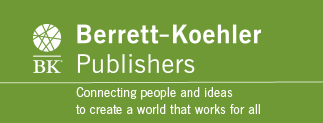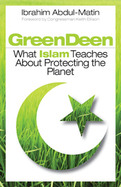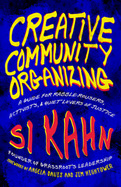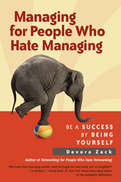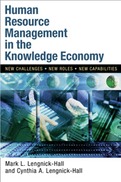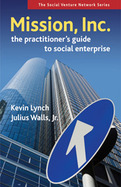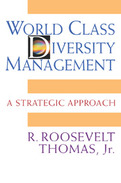2010
-
The first book to show how strongly the tenants of Islam support and promote environmentalism
-
Offers dozens of examples of what Muslims can doand are already doingto promote ecologically sound practices in their communities
-
Written by a Muslim community organizer speaking directly to other Muslimsbut accessible and illuminating to non-Muslims
Islam calls believers to praise the Creator, take care of each other, and take care of the planet. But the deep and long-standing convergences between Muslim beliefs and environmentalism arent widely known by other religions, in secular society, or even among many Muslims. In this groundbreaking book, Ibrahim Abdul-Matin draws on scripture, research, and viewpoints of Muslim scholars and community leaders to trace Islams historical and contemporary preoccupation with humankinds collective role as stewards of the Earth. As Abdul-Matin points out, the Prophet Muhammad himself declared that, the Earth is a mosque.
The soul of this book is profoundly practical. Deen means path or way in Arabic. Abdul-Matin focuses on how Muslims and Muslim communities can and already are following a Green Deen in four areas: waste, watts, water and grub (food). For example, the Saudi Arabian government has issued a religious ruling making it acceptable to use treated wastewater in the holy cities of Makkah and Medina for performing the ritual washing required of all Muslims. Oakland, Californias Light House Mosque has banned the use of paper plates, Styrofoam and plastic bottles during the evening feast that breaks the daily Ramadan fast. In Chiapas, Mexico there is a Muslim community that lives entirely off the gridmanufacturing its own solar energy and growing its own organic, halal food.
No other book about the environment has been written for Muslims, in language they can relate to. No other book highlights the contributions of Muslims to the environmental movement. No other book helps environmentalists of other faiths and orientations understand the gifts that Islam brings to help the struggle. Green Deen is much needed for Muslims and non-Muslims alike.
Si Kahn's impromptu song at BK Author Day Lunch Meeting
Shows how you can reverse your secret hatred of managing by finding a style that fits your personality and capitalizes on your natural strengths.
Professional success, more often than not, means becoming a manager. Yet nobody prepared you for having to deal with messy tidbits like emotions, conflicts, and personalities—all while achieving ever-greater goals and meeting ever-looming deadlines. Not exactly what you had in mind, is it?Don't panic. Devora Zack has the tools to help you succeed and even thrive as a manager. Drawing on the Myers-Briggs Type Indicator, Zack introduces two primary management styles—thinkers and feelers—and guides you in developing a management style that fits who you really are.
She takes you through a host of potentially difficult situations, showing how this new way of understanding yourself and others makes managing less of a stumble in the dark and more of a walk in the park. Her enlightening examples, helpful exercises, and lifesaving tips make this book the new go-to guide for all those managers looking to love their jobs again.
-
By the author of Networking for People Who Hate Networking
-
Shows how you can reverse your secret hatred of managing by finding a style that fits your personality and capitalizes on your natural strengths
-
Packed with a self-assessment, real-world examples, field-tested tips, and practical guidelines
You're good at your job and, after years of service and dedication, you finally get that coveted promotion. Congratulations! But there's a catch: instead of spending the majority of your time doing the job you lovea job you're still expected to get done, by the wayyou're now also a manager. You weren't trained for this. Nobody prepared you for having to deal with emotions and conflicts and personalities, all while trying to meet ever-greater goals and more pressing deadlines. Not exactly what you had in mind, is it?
Let's face it. It's stressful at the top. But don't worry; it doesn't have to be. Devora Zack knows exactly what you're up against, and she has the tools to help you not only succeed but possibly even enjoy that new management position. As a prominent consultant and coach who speaks to thousands of people annually, Zack is here to yetell you that the only way to maximize your success is by being yourself.
Drawing on the Myers-Briggs Type Indicator, Zack explains that, personality-wise and management-wise, we're either thinkers or feelers. Basically, thinkers lead with their heads and feelers lead with their hearts. Almost nobody's 100 percent thinker or feeler, yet most of us lean one way or the other (and Zack's handy assessment lets you figure out what kind of leader you are). Working withrather than fighting againstyour strengths is key to understanding not only how you make decisions and manage but also how people react to your decisions and respond to you.
Zack takes you through a host of potentially difficult situations, showing how this new way of seeing yourself and others makes managing less of a stumble in the dark and more of a walk in the park. Packed with verve, spunk, wit, and enlightening examples, helpful exercises, and lifesaving tips, Managing for People Who Hate Managing is the new go-to guide for managers looking to love their jobs again.
- Offers a fundamentally new conceptual model for the human resource function to meet the challenges of the knowledge economy
- Provides concrete suggestions for implementing this model, including numerous examples of effective practices from leading-edge firms
- Synthesizes current thinking on knowledge management and intellectual capital and identifies how human resource management can make a value-added contribution
2009
• The popularity of social enterprises has exploded in recent years – this is the authoritative guide to starting and running one
• Offers practical, from-the-trenches advice from two leading social entrepreneurs on confronting the challenges and seizing the opportunities social enterprises present
• The newest book in the Social Venture Network series – over 50,000 books in the series sold to date
R. Roosevelt Thomas begins by laying out his Four Quadrant model, which encompasses all core diversity strategies: managing workforce demographic representation, managing demographic relationships, managing diverse talent, and managing all strategic diversity mixtures. He analyzes the goals, motives, approaches, accomplishments, and challenges associated with each quadrant, as well as the paradigm or mindset that lies behind each quadrant's express purpose.
Having laid out this broad range of strategies, Thomas shows how to realize them through the Strategic Diversity Management Process™, by far the most effective method for implementation. A detailed case study of CEO Jeff Kilt—a fictional composite of the many executives Thomas has worked with—effectively illustrates the complexities encountered when working with each of the Four Quadrant strategies in the real world.
This book offers a comprehensive blueprint that will enable leaders to address any diversity issue (not just race or gender) in any setting, anywhere in the world. Most important, it proves that a world-class standard of diversity management is indeed a possible and achievable goal.
-
Copublished with the American Society of Association Executives (ASAE)
-
Advances the field by providing a unified framework and terminology and spelling out exactly what needs to be done to build world-class diversity management capability
-
Identifies optimal implementation approaches that can be used anywhere, anytime
With demographic shifts and globalization transforming the nature of relationships, interactions, and decision making, excellence in diversity management is more important than ever. However, the field of diversity has no established standard for evaluating what constitutes best practices, nor has there been any agreement on what the most fundamental philosophies, principles, and concepts areuntil now. In this pioneering book R. Roosevelt Thomas, one of our most distinguished diversity theorists and practitioners, proposes a framework that will enable the development of a truly world-class diversity management capability. It was the development of such standards in manufacturing that enabled companies to strategically pursue excellence in this area.
A world-class approach to diversity management must be applicable anywhere in the world, be able to address any possible issue, facilitate comparison of different concepts and practices, and focus on the entire field of diversity rather than specific dimensions such as race or gender. These requirements are amply met by Thomass Four Quadrant model and his Strategic Diversity Management Process.
Thomas first analyzes each of four quadrantsmanaging workforce demographic representation, managing demographic relationships, managing diverse talent, and managing strategic mixturesexploring the goals, motives, approaches, accomplishments, and challenges associated with each. And he reveals the unrecognized paradigm or mind-set that lies behind each quadrants express purpose.
Once he has laid out the broad range of diversity management strategies, Thomas discusses how to realize them. He offers an overview of the Strategic Diversity Management Processby far the most effective framework for implementation. He also examines the on-the-ground dynamics of implementing each of the strategies and their associated paradigms by incorporating a case study of a CEO, a composite of the many executives Thomas has worked with.
